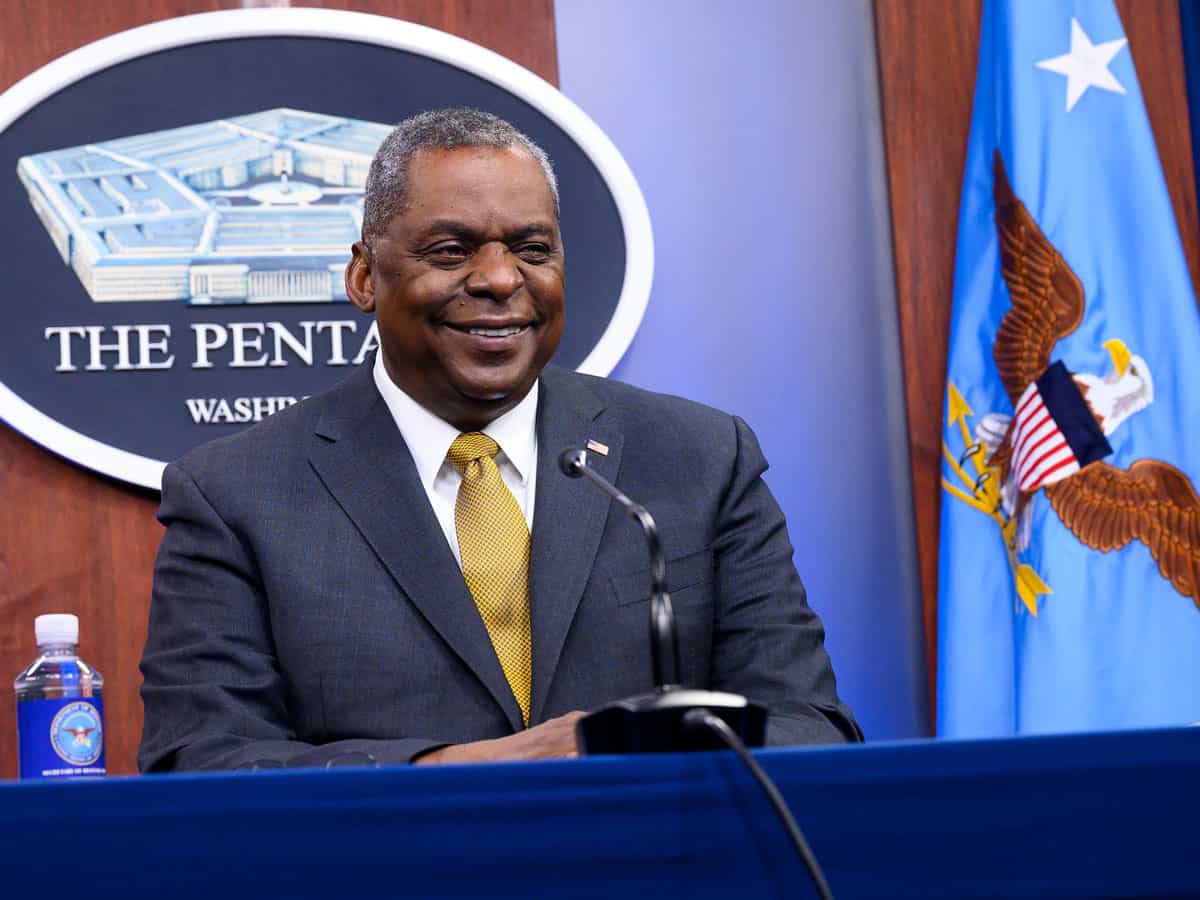New Delhi: US Defence Secretary Lloyd J Austin will be on a visit to India from March 19 to 21 that is expected to focus on ways to maintain a free and open Indo-Pacific and strengthen overall defence and security ties.
The defence ministry said Austin’s visit as part of his first overseas travel emphasises the strength of India-US strategic partnership.
“Secretary of Defence of the United States of America General Lloyd J Austin will visit India from March 19 to 21,” it said.
The defence ministry’s statement came after the Pentagon announced that Austin will visit India along with Japan and South Korea as part of his first overseas trip.
In a tweet, the US Defence Secretary said he would be travelling to India to meet his counterpart Rajnath Singh and other senior national security leaders to discuss deepening the US-India major defence partnership and advancing cooperation between the two countries.
“Looking forward to your visit, Secretary Austin,” Singh said replying to Austin’s tweet.
The defence ministry said both sides are expected to discuss ways to further strengthen bilateral defence cooperation and exchange views on regional security challenges and common interests in maintaining a free, open and inclusive Indo-Pacific region.
“Discussions regarding defence cooperation would also focus on how both countries could consolidate military-to-military cooperation and defence trade and industry cooperation,” it said.
It will be the first visit by a top US official after the Joe Biden administration took charge.
The US Defence Secretary’s visit will take place just a week after the first summit meeting of the leaders of Quad countries.
The top leaders of India, the US, Japan and Australia will hold their first summit in a virtual format on March 12, in a major move to further expand cooperation in the Indo-Pacific amid rising global concerns over China’s growing assertiveness in the region.
The Pentagon said Austin will visit US Indo-Pacific Command headquarters in Hawaii to meet with American troops and senior commanders and highlight his vision for the Indo-Pacific region as a priority theatre for the department.
“In India, Secretary Austin will meet with his counterpart, Minister of Defence Rajnath Singh, and other senior national security leaders to discuss deepening the US-India Major Defense Partnership and advancing cooperation between our countries for a free, prosperous and open Indo-Pacific and Western Indian Ocean Region,” it said.
The evolving situation in the Indo-Pacific region in the wake of China’s increasing military muscle-flexing has become a major talking point among leading global powers. The US has been favouring making Quad a security architecture to check China’s growing assertiveness.
The visit is also taking place at a time when India and China are looking to achieve the objective of disengagement from all friction points in eastern Ladakh after completing withdrawal of troops in the North and South banks of Pangong lake areas.
Austin and Singh had a telephonic conversation on January 27.
The Indo-US defence ties have been on an upswing in the last few years.
In June 2016, the US had designated India a “Major Defence Partner”.
The two countries have also inked key defence and security pacts over the past few years, including the Logistics Exchange Memorandum of Agreement (LEMOA) in 2016 that allows their militaries use each other’s bases for repair and replenishment of supplies as well as provides for deeper cooperation.
The two sides have also signed COMCASA (Communications Compatibility and Security Agreement) in 2018 that provides for interoperability between the two militaries and provides for sale of high end technology from the US to India.
In October last year, India and the US sealed the BECA (Basic Exchange and Cooperation Agreement) agreement to further boost bilateral defence ties. The pact provides for sharing of high-end military technology, logistics and geospatial maps between the two countries.

